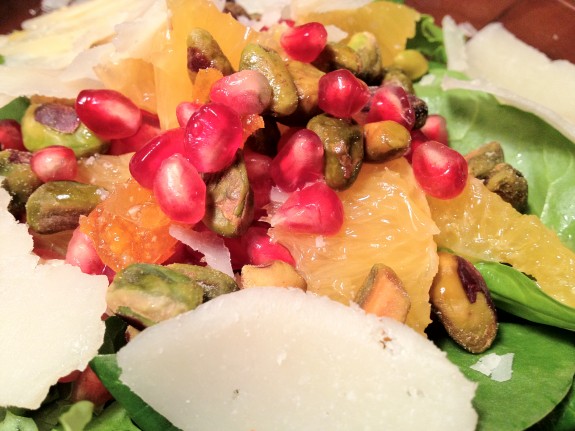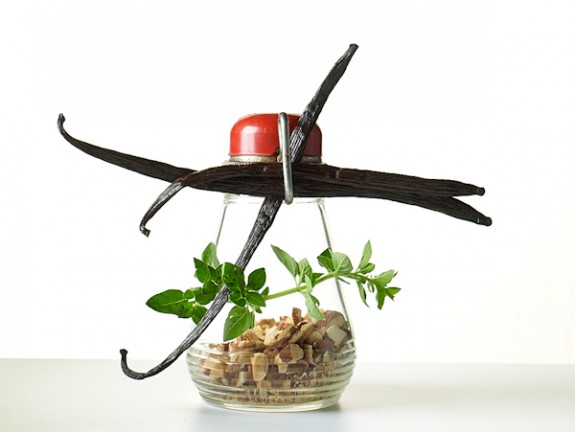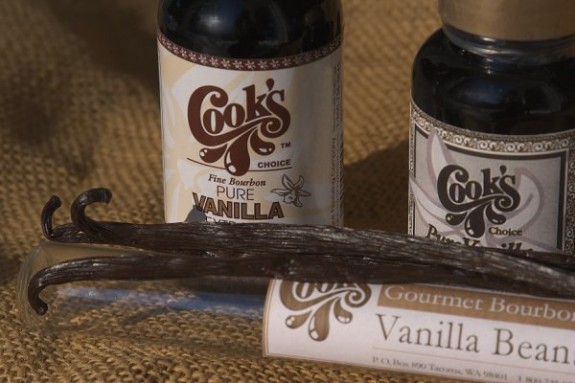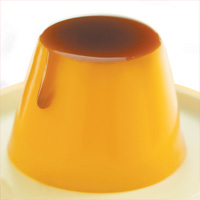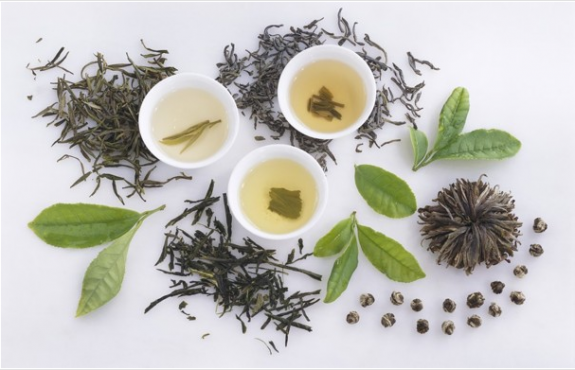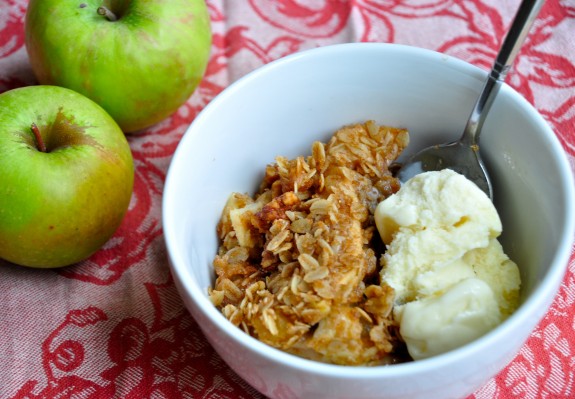Nutrition for Strength, Bones & Balance: Free Lecture Tonight
- At April 18, 2013
- By Katherine
- In News
 0
0

I plan on aging gracefully and adventurously... and will help you do the same! Hear my secrets tonight...
Bad news about aging: Starting in your 30s, your body begins losing muscle, bone mass, strength, and balance. This puts your health, energy, and ability to age gracefully in serious danger.
The good news: You can change this very real and scary picture with what you eat – and some of the news is surprising: For instance, saving your bone and muscle mass may have nothing to do with how much protein, calcium, or vitamin D you consume or even weight-bearing exercise you do! This is new and exciting state-of-the-art science. Hear my Georgetown Village lecture tonight – while nibbling on tasty appetizers and drinks – about how you can maximize your muscle, bone mass, strength and balance through nutrition.
Who: Katherine Tallmadge, M.A., R.D. President, Personalized Nutrition / Author, “Diet Simple”
Sponsored by: Georgetown Village
When: Thursday, April 18, 2013 at 6:30 pm
Where: St. John Episcopal Church’s Blake Hall, 3240 O Street, N.W. Washington, DC 20007
RSVP: Lynn Golub-Rofrano lynn@georgetown-village.org or 202.999.8988
Cost: FREE
On CNN: An Egg-A-Day Does Not Increase Heart Disease or High Blood Pressure Risk (Breakthrough Study)
- At February 01, 2013
- By Katherine
- In Articles, News
 0
0
My clients regularly ask me, “Should I be eating eggs? My doctor tells me they’re ‘poison,’ and to avoid eggs because they’ll increase my cholesterol.”
My response? “That’s OLD NEWS!” Read the updated scientific reports on eggs and find out why…
Most of the studies I’ve seen conclude that eggs are fine, I’ve reported in “7 Bad Foods That Are Good for You” in The Washington Post & “Eggs Don’t Deserve Their Bad Reputation, Studies Show” in LiveScience.com’s Expert Voices Op-Ed — and may even improve your health, as they contain nutrients difficult to find in other foods (see below). More importantly, a report by Ying Rong of Huazhong University of Science and Technology and her colleagues published in the British Journal of Medicine in January, reviewed 17 different egg studies.
The study concluded, “Higher consumption of eggs (up to one egg per day) is not associated with increased risk of coronary heart disease or stroke. The increased risk of coronary heart disease among diabetic patients and reduced risk of hemorrhagic stroke associated with higher egg consumption in subgroup analyses warrant further studies.”
The bottom line: Your nutritional needs and food choices should be personalized. You should enjoy food and eating, as it is one of the basic pleasures in life!
The much-maligned egg deserves more respect
My grandmother’s favorite food in the whole wide world was eggs (see recipe below). She loved eggs so much, we named an egg cooking style after her. The “grandmommy egg” was soft-boiled for three minutes. As it sat in an egg cup, we would slice off the top third so the runny yolk would form a delicious and naturally creamy sauce for the white.
Unfortunately, during the last decades of her life, my grandmother came to see eggs as poison and avoided one of her real food pleasures. Health authorities were warning the public against eating eggs for fear that they were a major cause of high cholesterol levels — the bad kind, low-density lipoprotein, known as LDL — and increased risk of heart disease.
New studies show that the caution may have been an exaggeration.
Yes, increased blood cholesterol levels can raise the risk of heart disease. Eggs are high in dietary cholesterol. But does eating eggs raise blood cholesterol and cause heart disease? This is where the story gets somewhat complicated, so stay with me, folks, and I’ll try to make sense of all of this.
First, the research
Most epidemiological research — the kind of research that studies large populations over time and analyzes their diets and their health — has found no connection between eating eggs and increases in heart disease. On the other hand, controlled clinical studies — where researchers feed subjects specific amounts of cholesterol and measure the effect on blood — do show a slight increase in blood cholesterol with increases in dietary cholesterol, though how much depends on genetic factors.
Cholesterol is an important component of all human and animal cells and influences hormone biology, among other functions. Since your body naturally has all it needs from producing its own cholesterol, there is no dietary requirement for more cholesterol. But the American diet contains plenty, since we eat a lot of animal products. All animal products contain some cholesterol, but they also contain saturated fat, an even more significant culprit in heart-disease risk.
“The major determinant of plasma LDL level is saturated fat,“said Alice Lichtenstein, professor of nutrition science and policy at the Friedman School of Nutrition Science and Policy at Tufts University.
And while eggs are high in cholesterol (186 milligrams, 184 of them in the yolk), they’re relatively low in saturated fat (1.6 grams in the yolk).
“In most people, for every 100 milligrams reduction in dietary cholesterol, one would predict a reduction in LDL levels of 2.2 points on average,“said Wanda Howell, professor of nutritional sciences at the University of Arizona.
In fact, during my 20 years of counseling people with high cholesterol, just reducing their saturated fat intake to a range of 4 percent to 7 percent of their calories, causes their blood cholesterol levels to plummet (I usually recommend 4% if you need a dramatic reduction in LDL cholesterol) — a double benefit.
Interestingly, people in Japan — consumers of some of the largest quantities of eggs in the world (averaging 328 eggs consumed per person per year — have low levels of cholesterol and heart disease compared with other developed countries, especially the United States. Why? In part, it‘s because the Japanese eat a diet low in saturated fat.
Americans do just the opposite. Research has shown that we usually have our eggs alongside foods high in saturated fat, such as bacon, sausage and buttered toast. This meal pattern raises LDL levels and makes the effect of eating eggs worse than it actually is.
So how many eggs can you eat? That depends on a number of factors. The American Heart Association no longer includes limits on the number of egg yolks you can eat, but it recommends that you limit your cholesterol intake to 300 milligrams daily, or 200 milligrams if you have heart disease or if your LDL is greater than 100. You decide where that cholesterol comes from!
Other experts go further and say an egg a day is fine.
“The amount that one egg a day raises cholesterol in the blood is extremely small, so small in fact that the increase in risk in heart disease related to this change in serum cholesterol could never be detected in any kind of study,“ said Walter Willett, professor of epidemiology and nutrition at Harvard’s School of Public Health.“Elevations in LDL of this small magnitude could easily be countered by other healthy aspects of eggs.“
Based on the research, my recommendation is if you eat a healthful diet, go ahead and eat an egg a day, says Katherine on CNN. On the other hand, if your cholesterol is high and if you eat the typical American diet — high in saturated fat, devoid of fruits, vegetables and fiber — maybe you shouldn’t be eating an egg a day.
But will taking eggs out of an unhealthy diet make a positive difference? Probably not. I can‘t tell you how many times during my career I‘ve heard people say, “I‘ve cut out eggs, but my cholesterol is still high!“The impact of a healthy, balanced diet cannot be denied here.
Good for you
Assuming you’re eating a healthy diet, here are some ways you may benefit by eating eggs.
Protein. Eggs are considered the gold standard that other proteins are measured against. Because of the superior amino acid mix, an egg’s six grams of protein are absorbed easily and efficiently used by the body. The egg is also low-calorie (74 calories).
Choline. Yolks are one of the best sources of this essential nutrient. Choline is needed for brain development in a growing fetus and may also be important for brain function in adults.
Lutein and Zeaxanthin. These two, important, beneficial phytochemicals found in egg yolks (as well as kale and spinach) help prevent eye diseases, especially cataracts and age-related macular degeneration. While eggs contain less lutein and zeaxanthin than greens, these phytochemicals are more absorbable because of the presence of fat in the yolk.
Vitamin D. Eggs are one of the few natural sources of Vitamin D, important for the bones and teeth. Vitamin D aids the absorption of calcium, which is important for the heart and colon, as well.
To bring this all together, here is a recipe that is a regular meal for me any time of the day — quick, easy, delicious, nutritious!
Eggs Scrambled with Onion, Garlic and Sweet Cherry Tomatoes
Servings: 1
Sauté 1/4 sweet onion and a smashed garlic clove over medium-high heat in 1 teaspoon canola or olive oil until almost soft. Add a handful of chopped tomatoes to the pan (or any other vegetables you happen to have, such as chopped spinach, kale, mushrooms or peppers) and cook for another 5 minutes. Turn down the heat to very low. In a separate bowl, whisk two eggs. Pour eggs into the pan containing the onion, garlic and tomato — add 1 ounce low-fat cheese, if you wish. Stir continuously until eggs are cooked. Pour over toasted, whole rye bread.
The Study: British Medical Journal 2013; 346 doi: http://dx.doi.org/10.1136/bmj.e8539 (Published 7 January 2013)
Study Conclusions: “Higher consumption of eggs (up to one egg per day) is not associated with increased risk of coronary heart disease or stroke. The increased risk of coronary heart disease among diabetic patients and reduced risk of hemorrhagic stroke associated with higher egg consumption in subgroup analyses warrant further studies.”
Bottom Line: “Your nutritional needs and food choices should be personalized. You should enjoy food and eating, as it is one of the basic pleasures in life!”
Sieze the New Year!
- At January 05, 2013
- By Katherine
- In Articles, News
 0
0
What are your hopes, dreams and desires for 2013? The new year is a valuable opportunity to improve the quality of your life and happiness. Here’s how to make the best of it…
Now, move mindfully across the threshold into 2012 filled with ideas, possibilities and plans! Analyze people who will continue to be important, ideas to explore, places to spend time, important events and things to carry over from last year to this year.
CREATING A “SENSE OF URGENCY”
An important aspect to making major changes in the world or in your own personal habits is to feel a sense of urgency about your goal. A sense of urgency, according to The Dalai Lama in “The Art of Happiness” – and scholars in this important field of psychological research, can be achieved two ways:
1) Remind yourself of your positive vision for success. For example, visualize yourself at your goal weight, healthy, feeling energetic and confident (see “Dream” in my best-selling book, Diet Simple), and
2) Ponder the negative consequences of not making a particular behavior change (a little fear can be a good thing – but just a little). For instance, in the morning as you’re considering two options: getting out of bed to exercise or sleeping just a little longer. Ask yourself: “Do I want to feel good today? Or do I want to feel crummy today?” Another example, as you’re driving home from work and deciding to grab some carry-out or to go home to eat the healthy meal you’ve already planned. Ask yourself: “Do I want to achieve my weight loss goal (insert positive vision here) or will I accept being the same weight and having the same health problems for another year?” “Do I want to stop taking these darn medications or will I be taking them forever – and even increasing the dosage? What will my doctor say?” “What kind of example am I setting for my children, my spouse? Is this a behavior I can be proud of?” etc. You get the idea…
ACHIEVING INCREASED HAPPINESS
Outlining the consequenses of your actions and acting on your long term goals, as opposed to momentary desires, helps you grow as a person and become a happier person, according to scientific research. It increases your general happiness level because you are making decisions which contribute to your long-term goals.
THE DOWNWARD SPIRAL OF GIVING IN
Usually, when we do something that feels good momentarily, such as giving in and staying in bed for 30 more minutes of sleep in the morning instead of exercising, or grabbing a coffee cake at the coffee shop when we originally just planned on buying coffee, our happiness level may increase (“oooh, this feels yummy!”) – but it’s only a temporary blip of happiness. It goes back to the same level it did before – once the temporary experience wears off – and nothing changes for the better in our lives. We may even become more depressed as we continue to “give-in” to these unfulfilling momentary desires and continue into a downward spiral.
MAKING THE HARDER, BUT MORE SATISFYING CHOICE
If, instead, we say to ourselves, “I’m getting out of bed NOW! I’ll feel terrible if I don’t, and I’ll never achieve my goals,” or “Will stopping to get carry-out change my life for the better? I’d be better off going home and eating something healthy as I want to lose weight, lower my cholesterol, etc,” or “I really don’t need that coffee cake, and I’ll feel terrible after eating it, and will it make me happier at the end of the day?” “Will this increase my happiness for the short term? Or for the long term?” Another more extreme example might be a drug addict relapsing. It feels great momentarily, but the feeling doesn’t last.
When you make a more thoughtful decision, which contributes to your longterm health – physical or psychological – you are more likely to achieve your life’s hopes, dreams and goals, you can actually increase your happiness level, feel happier more often and grow as a person.
WHY IT’S NOT ALWAYS EASY
It is not always easy in our society to make the healthy decision. It’s easier – and the norm, in fact – to be overweight and unhealthy. But, I’m convinced it is possible to be healthy in an unhealthy world with planning, practice, determination, and support (I’m here any time you need me!) – Besides, what’s the alternative?
It takes effort to train your mind to work this way, but this is how we become better people and we advance as a society.
THE RESOLUTION SOLUTION:
HOW TO MAKE YOUR RESOLUTIONS SUCCESSFUL
“Forty to 50 percent of American adults will make New Year’s resolutions for self improvement. Scientific research indicates you are ten times more likely to change by making a New Year’s resolution compared to non-resolvers with the identical goals and comparable motivation to change,” says John C. Norcross, PhD, Professor of Psychology, University of Scranton and coauthor of “Changing for Good.”
Dr. Norcross recommends the following strategies, based on studies tracking successful New Year’s resolvers, and their differences with unsuccessful resolvers:
* Make realistic, attainable goals (See “Tiny Changes, Lasting Results” in Diet Simple’s Introduction),
*Develop a specific action plan (Fill out “Your Personal Goal Worksheet” in Diet Simple),
* Establish genuine confidence that you can keep the resolution despite the occasional slip. Confidence is a potent predictor of who succeeds in the new year! (creating your “sense of urgency” will be useful here – see above)
* Publicly declare your resolution. Public commitments are generally more successful than private decisions,
* Track your progress by recording or charting. Studies show self-monitoring one of the most important behaviors correlated with successful change (see “Write it to Lose It” in Diet Simple),
* Reward your successes (see “Get Sexy Lingerie” or “Kiss Your Spouse” in Diet Simple),
* Arrange your environment to help, rather than hinder, you. Limit exposure to high-risk situations and create reminders for your resolutions (see all of Diet Simple!),
* Expect occasional slips in your resolutions (see “Lighten Up!” in Diet Simple). Studies of successful weight loss maintainers show they experience just as many stressors and slips as weight relapsers; no one’s perfect after all (sorry to disillusion you)! The maintainers pick them self up, dust themselves off, and start all over again!
* Cultivate social support (see all of Diet Simple!). Successful weight loss maintainers are more likely to cultivate support from friends, loved ones, or professionals. It does take a village!
The Battle of the Bulge is Won at the Margins. Sweeping Dietary Overhauls are Impractical and Don’t Work Over Time!
Shrewd, Small, Concrete Changes Which Can be Easily Incorporated into Your Daily Routine Lead to Success!
Music and poetry move me deeply, and in ways I don’t always understand. All we know is after hearing something, we feel so much better. I’ve made some selections that have made a difference for me and hope you enjoy them too.
My Favorite Holiday Recipe: Winter Salad of Orange and Pomegranate
- At December 20, 2012
- By Katherine
- In News, Recipes
 0
0
The simple pleasures in life always bring me the most joy. I especially love the holidays because it’s a time of year I get to spend precious moments with my family and friends. One of my favorite traditions is an annual “girls get-together” with 3 of my favorite girlfriends. We feast on the most fabulous “girl” food, share stories about our lives, and exchange thoughtfully chosen gifts. I’m always asked to bring the “salad,” which is really so much more. This “salad” is a feast for the senses: salty, sweet, tart, crunchy – every texture, flavor and color imaginable. Developed by Persian Chef, Najmieh Batmanglij, it is a holiday home-run.
Winter Salad of Orange and Pomegranate
By Najmieh Batmanglij in “Cooking With Les Dames d’Escoffier”
4 servings
Ingredients:
1 Cup (about 1 large pomegranate) pomegranate seeds
6 Large Oranges, peeled and cut into section, membrane removed
¼ Cup Finely Chopped Candied Orange Peel (store-bought or home-made)
½ Cup freshly squeezed Orange Juice
1 Tbsp freshly squeezed Lime Juice
1 tsp Orange Blossom Water
8 ounces Sheep’s milk cheese, such as Pecorino Romano OR aged Goat Cheese, cut into shavings with a potato peeler (I use only 2 ounces)
1/3 Cup Chopped pistachios
Pistachio Oil or light-bodied Extra-Virgin Olive Oil
Instructions:
In a bowl, combine the pomegranate seeds, orange segments, candied orange peel, orange juice, lime juice and orange blossom water. Cover and chill in the refrigerator for at least 30 minutes. To serve, distribute the fruit mixture among 4 plates. Alongside the fruit, place a portion of cheese and top with the chopped pistachios and a light drizzle of oil. Serve immediately
Study: Exercise Reduces Appetite, But Only Certain Types of Exercise
- At November 09, 2012
- By Katherine
- In Articles, News
 0
0
A new study comfirmed what I’ve experienced about exercise: Cardiovascular exercise (walking, dancing, skating, rowing, etc) reduces appetite, but, strength training does not.
The study…
Abstract
Objective: To investigate the effect of 12 weeks of aerobic (AER) compared with resistance training (RES) on perceived hunger and fullness, together with appetite-related hormones in both the fasted state and postprandially.
Method: Thirty-three inactive, overweight and obese men (age 49![]() ±
±![]() 7 years; BMI 30.8
7 years; BMI 30.8![]() ±
±![]() 4.2
4.2![]() kg/m2) were allocated to either AER exercise (n
kg/m2) were allocated to either AER exercise (n![]() =
=![]() 12), RES exercise (n
12), RES exercise (n![]() =
=![]() 13) or a control group (CON; n
13) or a control group (CON; n![]() =
=![]() 8). AER and RES completed 12 weeks of training (3 sessions per week), while CON continued their sedentary routine. Perceived hunger and fullness, together with appetite-related hormones (active ghrelin, leptin, insulin, pancreatic polypeptide (PP), and peptide tyrosine tyrosine (PYY)) were assessed pre and post-intervention in the fasted state and in response to oral glucose consumption (1284
8). AER and RES completed 12 weeks of training (3 sessions per week), while CON continued their sedentary routine. Perceived hunger and fullness, together with appetite-related hormones (active ghrelin, leptin, insulin, pancreatic polypeptide (PP), and peptide tyrosine tyrosine (PYY)) were assessed pre and post-intervention in the fasted state and in response to oral glucose consumption (1284![]() kJ; 75
kJ; 75![]() g carbohydrate).
g carbohydrate).
Results: Both AER and RES training elicited a decrease in fat mass (p![]() <
<![]() 0.05), while CON did not. There was no difference in perceived hunger either in the fasted state (p
0.05), while CON did not. There was no difference in perceived hunger either in the fasted state (p![]() >
>![]() 0.05) or in response to caloric consumption (p
0.05) or in response to caloric consumption (p![]() >
>![]() 0.05) following the intervention in any group. In contrast, both fasting and postprandial perceived fullness was higher following AER exercise (p
0.05) following the intervention in any group. In contrast, both fasting and postprandial perceived fullness was higher following AER exercise (p![]() <
<![]() 0.05), but not RES exercise or CON. These observations were not associated with alterations in fasting or postprandial active ghrelin, PP or PYY, although fasting and postprandial leptin was reduced following both AER and RES training (p
0.05), but not RES exercise or CON. These observations were not associated with alterations in fasting or postprandial active ghrelin, PP or PYY, although fasting and postprandial leptin was reduced following both AER and RES training (p![]() <
<![]() 0.05).
0.05).
Conclusion: Aerobic exercise training is associated with an increase in satiety, while an equivalent period of resistance training is not.
For more information about exercise’s physiological benefits…
For the full study…
Learn Ancient Rules of Balanced Living for Today’s Stressful Lives: A Symposium November 16/17
- At November 07, 2012
- By Katherine
- In Articles, News
 0
0

Sister Joan Chittister with Maria Shriver and Bono (Photo Courtesy Leadership Conference of Women Religious)
Every day I notice that conflict, confusion, and isolation are familiar feelings for so many of us. We are over-scheduled, multi-tasking automatons running from one appointment to another—when not glued to our computers, smartphones, televisions, and cars.
And we are too busy. Too busy to exercise, eat right, sleep enough, relax, or socialize with family and friends. Too busy to spend time enriching our lives with new subjects to study, engaging in creative hobbies, or volunteering in our communities. Too busy for living lives of balance and fulfillment. Our lifestyles are wreaking havoc with our health, happiness and the very fabric of our society. What to do?
I, for one, have turned to the 6th century wisdom of Benedict of Nursia because “Life is a teacher of universal truths” whether you live in the 6th or the 21st century,” writes Joan Chittister, OSB*, a Benedictine nun, in her book, The Rule of Benedict: Insights for the Ages. The hard-won wisdom passed down from Benedict is as alive and applicable today as it was when it was written 1,500 years ago, as evidenced by the scholars who have studied Benedict and his wisdom through the ages.
Benedict—Saint Benedict as we now know him—was living in Italy at a time of chaos, in a society ravaged by war. Tired of the decadent culture surrounding him in Rome where he was studying, he sought meaning and purpose in his life (sound familiar?). He left to live a simple life in the countryside where other spiritual seekers found him. He eventually founded 12 monasteries, which resulted in his Rule of Benedict, a succinct manual (just 93 pages), described by Chittister in her book’s introduction as a guide to “the logic of daily life lived well.”
“Benedictine spirituality is the spirituality of the 21st century because it deals with the issues facing us now—stewardship, relationships, authority, community, balance, work, simplicity, prayer, and spiritual and psychological development,” writes Chittister, who formerly headed a Benedictine monastery. “Its currency lies in the fact that Benedictine spirituality offers more a way of life and an attitude of mind than it does a set of religious prescriptions.”
Embracing this wisdom, Benedictine communities, monastic and non-monastic, have sprung up all over the world. In fact, one such organization, The Friends of Saint Benedict, headquartered in Washington, D.C., is offering its First Annual Symposium on Benedictine Spirituality on November 16 & 17, featuring Sister Joan*, and a roundtable discussion with other Benedictine scholars.
She notes, “The Benedictine way of life is credited with having saved Europe from the ravages of the Dark Ages. In an age bent again on its own destruction, the world could be well served by asking how.”
Join me and learn more about how the ancient wisdom of Benedict can be used to help us to create calm in a world of chaos, offering love and acceptance in a world of hate and violence at the Friends of Saint Benedict’s Symposium on Benedictine Spirituality on November 16 & 17.

Sister Joan Chittister (4th from right) with various religious leaders (Photo Courtesy Leadership Conference of Women Religious)
*Joan Chittister, OSB, former prioress of the Benedictine Sisters of Erie, Pennsylvania and a leader among women monastics, is an internationally known speaker and writer, author of 45 books, and a voice of clarity on spirituality, women’s empowerment, justice and the search for meaning. Her ideas—carried in books, columns, and Internet platforms– have encouraged people inside and outside the church, people in prisons, people in work and out of work, and people facing every conceivable life transition. She serves as Co-Chair of the Global Peace Initiative of Women, a partner organization of the UN, facilitating a worldwide network of women peace-builders.
Katherine’s Weekly Market Recipe: Light Sweet Potato Flan with Vanilla Bean
- At November 06, 2012
- By Katherine
- In News, Recipes
 0
0
My very luscious version of a “flan,” a custard dessert, is lighter and simpler than most, and highlights one of the most nutritious seasonal foods – the sweet potato, and a favorite flavor: Vanilla. The vanilla’s quality is essential to the flavor, so I buy special plump, juicy California vanilla beans – the kind top chefs use – from Cook’s.** Sprinkle the flan with toasted pecans for a bit of crunch. Make in six or eight “personal” soufflé dishes, or in one large dish. Perfect as a holiday dessert!
Today is the 12th “Katherine’s Market Recipe,” all of which are designed to be delicious, easy, quick, family-friendly, nutritious (heart-healthy & diabetes-friendly), and to highlight produce found at our local Farmers Markets this week. At your Farmers Market, you’ll find produce picked at peak ripeness, which means maximum flavor, texture and nutrition. You’re also helping save the environment when you buy at your Farmers Market. Here’s how…
For my “Light Sweet Potato Flan with Vanilla Bean,” I recommend you buy your sweet potato at the Glover Park – Burleith Farmers Market on Saturday, or Dupont Circle’s Fresh Farm Market (open year-round) on Sunday.
**Cook’s Vanilla
And don’t forget the Cook’s Vanilla for your Flan and other holiday baking. I first discovered this special vanilla in Georgetown’s Griffin Market (now closed). It peaked my interest because former Washington Post food reporter (and longtime Georgetown resident), Walter Nicholls, endorsed it and provided it to Griffin. Apparently, Walter has teamed up with Paso Robles, California’s Cook Flavoring Company, a family-owned business. “They personally monitor the cultivation and harvest of its vanilla beans in a way that few can match and no one can exceed, extracting the flavor by the same slow, cold extraction method the family has been using for almost a century,” said Walter. The best pastry chefs in town seem to use it: Baked & Wired, Dolcezza, Black Salt, CoCo Sala, CityZen, the Hay Adams hotel and all of Jose Andres restaurants, to name a few. Beans and extract are available locally at Rodman’s on Wisconsin Avenue.
Katherine’s Light Sweet Potato Flan with Vanilla Bean
Serves 6 – 8
2 Cups 1% Lowfat Milk
2/3 cup Granulated Sugar
½ Vanilla Bean, halved lengthwise
¾ pound Sweet Potato (1 large)
2 Eggs
1 Egg Yolk
1Tablespoon Warm Molasses (Optional)
1 ounce (1/4 cup) Chopped, Toasted Pecans or any favorite Nut (Optional)
Preheat oven to 350 degrees F. Place sweet potato on the oven rack and let cook for about 45 to 60 minutes or until tender when pierced with a fork. Use long tongs to pull out of the oven. When warm to the touch, remove the peel. Mash the potato flesh and measure out ¾ cup.
Turn oven temperature down to 325 degrees F. Lightly butter or spray the insides of 6 or 8 ½-cup ramekins* or a 6-cup glass Pyrex bowl or soufflé dish.
In a medium saucepan, bring milk, sugar, and vanilla bean slowly to a boil, stirring until sugar is dissolved. Turn off the heat. Pull out the vanilla bean and scrape the vanilla seeds into the milk mixture. Return the pod to the pot and let sit for 15 minutes to let flavors blend.
Meanwhile, puree the 2 eggs and 1 egg yolk with the mashed sweet potato (I use a Cuisinart Smart Stick immersion hand blender). Add the sweet potato mixture to the warm milk mixture and puree until well blended – most easily done (and less messy) with an immersion hand blender. For a smooth custard, try not to create too many bubbles.
Pour the liquid into six or eight ramekins, or into the 6-cup soufflé dish. Set the soufflé dish(es) into a large baking pan and add boiling water until it is halfway up the sides of the soufflé dish(es). Place in the center of the oven and bake until slightly wobbly in the middle – about 40 to 45 minutes for the individual ramekins or 1 hour if you’re using the larger soufflé dish.
To serve: Leave the custards in the water bath until they are not too hot to handle or until ready to serve. Slide a knife around the inside edge of the individual dishes and turn them onto serving plates. Or scoop out 6 or 8 servings from the large soufflé dish. Over each serving, drizzle the warm molasses and sprinkle chopped, toasted pecans.
**A “ramekin” is an oven-proof ceramic or glass serving dish, usually round, but sometimes in novelty shapes, ie, hearts or ovals.
The entire recipe = 1,000 calories (1,242 calories with molasses and pecans). Divided into 6 servings = 167 calories per serving (207 with molasses and pecans). Eight servings = 125 calories per serving (155 with molasses and pecans).
Katherine’s “Light Sweet Potato Flan with Vanilla Bean” was adapted from award-winning cookbook author, Deborah Madison’s “Local Flavors: Cooking and Eating From America’s Farmers’ Markets.”
Sweet Potatoes, considered one of the “Super Foods,” are loaded with Beta-Carotene, the orange pigment which is a potent anti-oxidant. It is important for your immune system, your skin, your vision, bones, reproduction, and may reduce cancer risk. But sweet potatoes provide so much more; they’re also high in fiber, vitamins C, E, the B vitamins, and minerals such as potassium, manganese, magnesium and iron. Sweet potatoes’ origins date back thousands of years in Peru, became a favorite of Christopher Columbus once he landed in America, and grow particularly well in the American South, where they have become a staple.
Favorite Fall Recipes … Perfect for Thanksgiving
- At November 01, 2012
- By Katherine
- In News, Recipes
 0
0
Appetizer:
Najmieh’s Yogurt and Spinach Dip
First Course Options:
Butternut Squash Soup with Curry and Ginger
Side Dish Options:
Najmieh’s Cauliflower KuKu with Fresh Parsley and Spices
Warm Potato Salad with Haricots Verts with a Lemony Garlic Mayonnaise
Main Course:
Turkey!
Dessert Options:
Experts Read the Tea Leaves: 7 Tips for Tea Drinkers
- At October 31, 2012
- By Katherine
- In Articles, News
 3
3
“Experts Read the Tea Leaves” is published in the November 1 Washington Post.
A tea timeout is my favorite way to de-stress a day. It feels so civilized to relax with a warm cup of jasmine-scented green tea or perhaps the traditional English treat, black tea with milk – “white,” as they say. No wonder the fathers of our country took up arms for their right to drink it. Still, with all the myths we hear about nutrition, I’ve always wondered, is tea as healthful as many people believe?
Although tea has been enjoyed around the world for some 5,000 years, it wasn’t until relatively recently that scientists started searching for the facts.
From the 1970s to the 1990s, epidemiological studies – the kind following large populations’ eating and disease patterns – found tea drinking might be associated with better health. But no clear cause-and-effect relationship between health and tea was established.
Recent studies have been promising. What did they find? Just about every cell in the body could potentially benefit from tea – with virtually no downsides.
- All true tea (white, green, oolong and black, as opposed to herbal varieties) comes from one plant: Camellia sinensis. The differences are in how they are processed, with white and green being the least processed, oolong in the middle and black the most processed. The processing changes the nutritional profile and some of the health effects. But no matter the process, all tea leaves are dense with flavonoids, health-promoting chemicals found in fruits, vegetables, whole grains and most plants.
“About one-third of the weight of a tea leaf is flavonoids, which is high, especially when you consider there are virtually no calories,” said Jeffrey Blumberg, professor of nutrition science and policy at Tufts University and chairman of the tea symposium. “A serving of tea is like adding a serving of fruits or vegetables to your diet.”
- But can tea produce more health benefits than fruits or vegetables? Flavonoid research results are exciting but mixed, and there is still a lot to learn. There are “small but possibly significant health effects, but study quality needs to improve. . . . The variety, geography, processing and brewing of tea must be considered since it will dramatically change flavonoid content and possibly associated health benefits,” Dwyer said, adding, “Tea is not a drug, and to expect a drug-like effect is unrealistic.” So, while not a miracle cure-all, there is some exciting news about tea:
●It helps your heart by keeping blood vessels unclogged and flexible. Blood pressure and stroke risk were reduced in epidemiological and clinical studies (even with sugar added). In a double-blind, randomized study in which hypertensive men drank one cup of black tea daily, both systolic and diastolic blood pressure were reduced. The blood-pressurelowering effect was maintained even after a large intake of fatty, sugary food, whichusually constricts blood vessels, showing that “cardiovascular protection can be achieved even without much sacrifice and with normal intakes,” said Claudio Ferri, a professor at Italy’sUniversity of L’Aquila School of Internal Medicine and co-author of the study. Healthier blood vessels create better blood flow, which means all of your organs, including the brain, are receiving more blood, oxygen and nutrients, enhancing your body’s ability to fight disease. So, healthier blood vessel linings might be one reason why tea consumption seems associated with so many benefits.
●It improves bone health. After drinking four to six cups of green tea daily for six months, post-menopausal women with low bone mass (osteopenia) achieved an improvement in certain short-term measures of bone health in a National Institutes of Health-funded study conducted at Texas Tech University Health Sciences Center. They also improved muscular strength. Tea reduced oxidative stress and inflammation, preventing the usual bone and muscle breakdown.
●It can help your thinking. When your brain receives better blood flow and oxygen, and inflammation and oxidative stress are reduced, there is improved cognitive function, according to studies. In fact, a 25 percent reduction in impairments of activities of daily living was found when adults drank three to four cups of tea daily
●It might reduce cancer risk. Many animal and test-tube studies have found anticancer effects of tea, but human studies have been less consistent. “In lab studies, compounds in tea show a lot of cancer fighting promise. Many act as antioxidants, slow tumor growth and even increase cancer cell death,” said Alice Bender of the American Institute for Cancer Research. “But the evidence is too limited and inconsistent to make any conclusions about tea and cancer risk for humans.”
● It can help you lose weight. Not only does tea have fewer calories than most beverages (zero without milk and sugar), but certain compounds in tea, and especiallygreen tea, have been found to burn body fat. Caffeine slightly increases fat-burning, but recent studies show “the combination of caffeine and green tea catechins [a type of flavonoid] is even more effective at increasing energy expenditure and fat oxidation, though the effect is small, burning 100 calories over 24 hours, or a loss of 2.8 pounds over 12 weeks,” said Rick Hursel of Maastricht University, co-author of one study.
● It can help you destress. An amino acid called L-theanine, in combination with caffeine, might reduce stress. Several studies have shown that this combination, which occurs naturally in tea, reduces cortisol, the stress hormone, while improving mental alertness. “Tea consumption can positively affect mood and may improve creative problem solving, as compared to water,” said Suzanne Einother, a Dutch researcher from Unilever (maker of Lipton tea), at the symposium. Tea is not a drug, which means the health effects are mild and might not even be noticeable, depending on your genetics. That said, a wealth of evidence seems to show that the British had the right idea. Perhaps it’s time we all had a tea habit.
7 tips for tea drinkers
1. “Tea catechins are stable in dry tea leaves but diminish as brewed tea is held/stored. To make sure you are consuming the tea phytonutrients (flavonoids) that may promote health, brew tea fresh,” nutritionist Beverly Clevidence of the USDA’s Agricultural Research Service said in an e-mail. To maintain the healthful nutrients in tea, leaves should be kept away from light and heat in an airtight container.
2. Many people believe tea is dehydrating and don’t recommend it as a hydrating fluid. But the National Academy of Sciences has refuted that claim, saying tea and coffee are as hydrating as water.
3. Some avoid tea because of its effect on iron absorption, but the effect is small. If you have iron-deficiency anemia, drink tea between meals to minimize interference, and eatyour iron-containing foods with vitamin C-containing foods to maximize iron absorption.
4. Milk (or any protein, for that matter) might bind with and prevent absorption of some flavonoids but could enhance absorption of others. Studies have been too limited to determine the extent of the effect.
5. Drink tea throughout the day to keep the flavonoids in your system and get maximum benefit — various studies have suggested between one and six cups a day — but don’t forget a balanced diet.
6. Stick with the tea you enjoy most, whether white, green, oolong or black. All impart health benefits, and the studies are not detailed or numerous enough to choose one over another. “While fermentation causes green tea to become black, digestion may convert black tea back to green,” Jeffrey Blumberg, professor of nutrition science and policy at Tufts, said.
7. Be wary of bottled ready-to-drink teas or products containing tea extracts or supplements, as there is no way of knowing their flavonoid content, if any. (Many are very low or nonexistent.)
Katherine’s Market Recipe: Autumn Apple Crisp with Nuts, Dried Fruit & Ginger
- At October 30, 2012
- By Katherine
- In News, Recipes
 0
0
Today is the 11th “Katherine’s Market Recipe,” all of which are designed to be delicious, easy, quick, family-friendly, nutritious (heart-healthy & diabetes-friendly), and to highlight produce found at our local Farmers Markets this week. At your Farmers Market, you’ll find produce picked at peak ripeness, which means maximum flavor, texture and nutrition. You’re also helping save the environment when you buy at your Farmers Market. Here’s how…
For my “Autumn Apple Crisp with Nuts, Dried Fruits, and Ginger,” I recommend you buy the apples or pears at Georgetown’s Rose Park Farmers Market (your last chance this year) on Wednesday, or Dupont Circle’s Fresh Farm Market (open year-round) on Sunday.
Katherine’s Autumn Apple Crisp with Nuts, Dried Fruit & Ginger
By Katherine Tallmadge, M.A., R.D.
This will become a favorite holiday dessert – delicious, but quick and simple, too. And, heart healthy – using predominantly whole grains and nut oil instead of butter – and filled with fruit and nuts.* This Apple Crisp is very versatile with its main ingredients. Use a crunchy, tart Fall Apple, an Anjou Pear, or a combination of both. Use any dried fruit, your favorite nut, and a nut oil for maximum flavor.
Serves 12
Filling:
½ Cup Pure Maple Syrup
½ Cup Raisins, Dried Cranberries, or a mix of both
2 Tablespoons Fresh Squeezed Lemon Juice
1 Tablespoon Minced Candied or Crystalized Ginger, or less if you like it less strong
2 Tablespoons All-Purpose Flour
3 pounds crisp, tart Fall Apples, or any apple or pear, peeled and thinly sliced
Topping:
1-1/2 Cups Old Fashioned Rolled Oats
½ Cup Chopped Walnuts, Pecans, Hazelnuts, any favorite Nut – or a mixture**
½ Cup Brown Sugar
1/3 Cup Whole Wheat Flour*
½ teaspoon Ground Cinnamon
1/3 Cup Walnut Oil, any Nut Oil,** or Canola Oil
Preheat oven to 350 degrees F.
Prepare filling: In a large bowl, mix the maple syrup, dried fruit, lemon juice, ginger, and flour. Add the apples and mix well. Pour into a 9-by-13-inch baking dish.
Prepare Topping: Mix the oats, nuts, brown sugar, whole wheat flour, and cinnamon. Add the oil and mix until the topping is moist. Pour over the filling in the baking dish.
Bake for 45 to 50 minutes or until the apples are tender and the crumble is golden brown. Let stand for 10 minutes until serving
300 calories per serving.
“Katherine’s Autumn Apple Crisp with Nuts, Dried Fruits, and Ginger” is adapted from a recipe in “Eating Well” Magazine.
*A whole grain – whole oats and whole wheat flour – has three parts: bran, germ and endosperm. The bran and germ contain fiber, Vitamin E, B vitamins (thiamin, niacin, riboflavin and pantothenic acid) minerals (calcium, magnesium, potassium, phosphorous, sodium, selenium and iron), protein, essential oils, antioxidants and phytochemicals (plant substances that may protect health). The endosperm contains mostly starch with a little protein and very few nutrients. When a grain is refined, turning whole wheat flour into white flour or brown rice into white rice, only the nutrient-poor endosperm is left. The heart-healthy, cancer-fighting riches found in the bran and germ are lost. Learn more about whole grains…
**Nuts – Every time a new study comes out about nuts – any nut – it’s positive news. Nut eaters around the world have fewer heart attacks, and we know that most of the protective nutrients are in the oil of the nut. While you already know each nut has a different look and flavor, each nut also has its own unique nutritional characteristics. For instance, almonds are the highest in protein and Vitamin E, and the lowest in artery-clogging saturated fat. Walnuts are the only nut with omega-3-fatty acids. Pecans have the highest antioxidant content. Pistachios contain lutein, a compound which may significantly improve eye health. ALL nuts are good for you. My favorite: Italian Hazelnuts!


